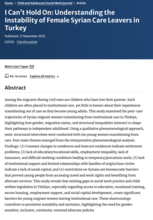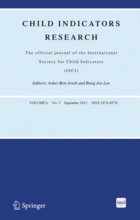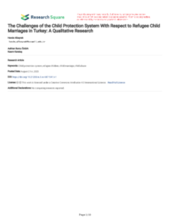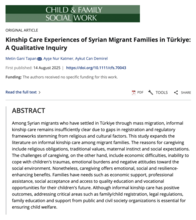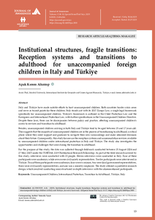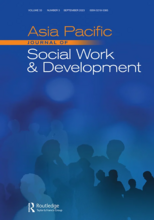Displaying 1 - 10 of 45
This study explores the experiences of young Syrian migrant women transitioning out of institutional care in Türkiye, revealing how gender, migration status, and structural barriers shape their pathways to adulthood. It finds that gaps in education, employment support, housing, social capital, and aftercare services create persistent instability and exclusion, underscoring the need for more inclusive, gender-sensitive aftercare policies.
This study examined the link between child neglect and family protective factors among 936 parents in Hatay, Türkiye, a region marked by migration, cultural diversity, and economic hardship. Results showed that stronger family protective factors were associated with less neglectful behavior, emphasizing the need for family-centered prevention efforts in disadvantaged, multicultural contexts.
This study examines the challenges faced by child protection professionals in Turkey when addressing refugee child marriage, highlighting issues in identification, assessment, and residential care due to cultural acceptance and systemic weaknesses. The findings emphasize the need for culturally informed, system-wide interventions to better protect at-risk refugee children.
Among Syrian migrants who have settled in Türkiye through mass migration, informal kinship care remains insufficiently clear due to gaps in registration and regulatory frameworks stemming from religious and cultural factors. This study expands the literature on informal kinship care among migrant families.
Italy and Türkiye, both key transit countries for unaccompanied children, have legal frameworks to support them, yet gaps between policy and practice hinder access to services and a smooth transition to adulthood. This study, based on qualitative fieldwork and 23 interviews conducted in both countries, examines reception systems, accommodation services, and the challenges unaccompanied children face during this critical life stage.
This research examined children’s homes, one of the residential child care institutions in Turkey, in terms of spatial aspects, institutional functioning and, child-care staff relations.
This study aimed to examine the sense of family belonging of individuals with childhood institutional care experience through personal details, institutional care, and post-institutional-care variables. This study was conducted with 313 adults with institutional care experience during childhood in Western Asia.
Aid groups say children need immediate shelter, psychological support, education, and permanent homes
A baby began her life surrounded by chaos and devastation this week. Reportedly named Aya – meaning ‘miracle’ in Arabic – she was born under the rubble of Monday’s deadly earthquake, still attached to her mother’s lifeless body by the umbilical cord when rescue workers found her.
Rachel and her husband adopted Marcus out of Guatemalan foster care as a 7-month-old infant and brought him home to Lansing, Mich. With a round face framed by a full head of dark hair, Marcus was giggly and verbal — learning names of sea animals off flashcards, impressing other adults.

